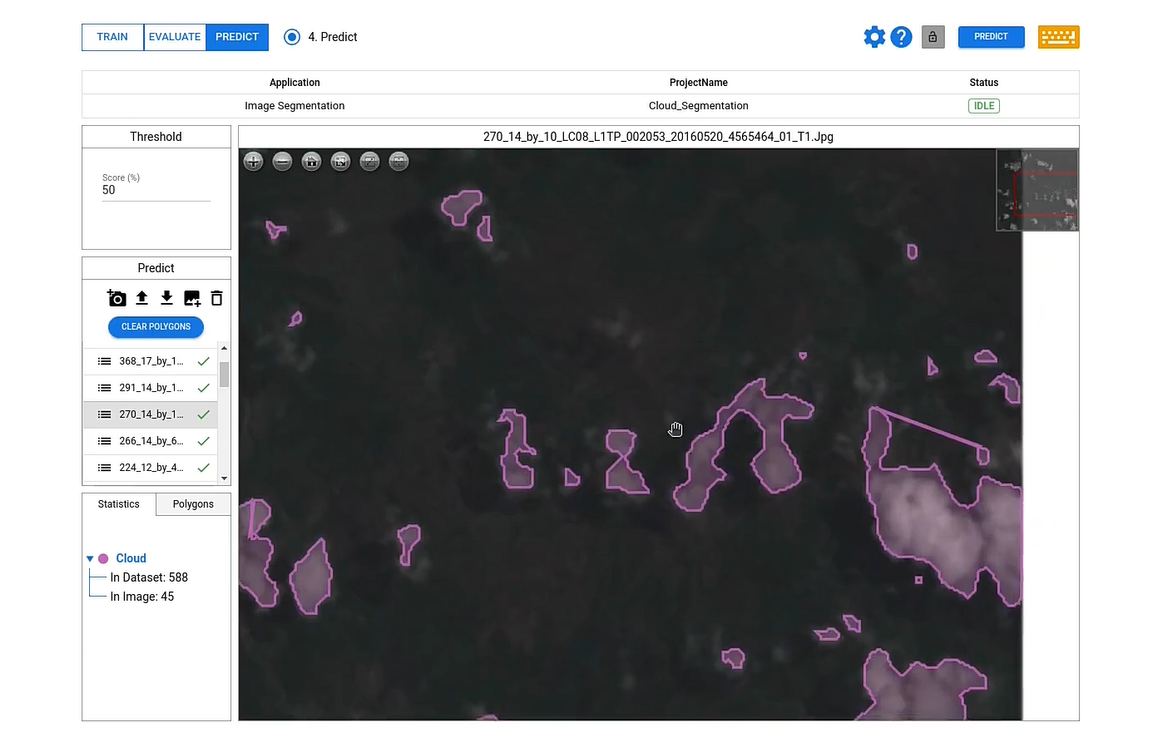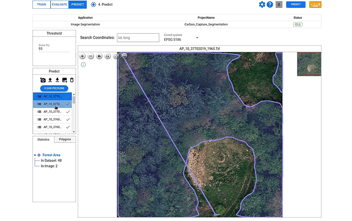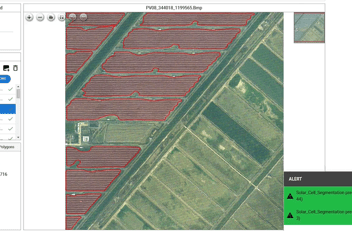Revolutionizing Weather Forecasting: How Remote Sensing Enhances Cloud Cover Estimation

Discover how remote sensing technology revolutionizes weather forecasting by accurately estimating cloud cover.
You can check out our new cloud segmentation model here.
The Importance of Cloud Cover in Weather Forecasting
Cloud cover plays a crucial role in weather forecasting. It refers to the extent to which clouds cover the sky and can greatly influence various weather conditions. Clouds act as a barrier, preventing solar radiation from reaching the Earth's surface and affecting the temperature. They also impact precipitation patterns, wind direction, and atmospheric stability. Therefore, accurately estimating cloud cover is essential for predicting weather conditions accurately.
Cloud cover estimation helps meteorologists understand the overall weather patterns and make more accurate predictions. By analyzing cloud cover data, forecasters can determine the likelihood of precipitation, assess the presence of severe weather conditions such as thunderstorms or hurricanes, and predict the amount of sunlight that will reach the surface. This information is crucial for a wide range of applications, including agriculture, aviation, and climate research.
Traditional methods of cloud cover estimation relied on human observers and ground-based instruments. However, these methods were limited in their coverage and accuracy. Remote sensing technology has revolutionized cloud cover estimation by providing a more comprehensive and precise approach.
Understanding Remote Sensing Technology
Remote sensing technology involves the acquisition of information about an object or phenomenon without making physical contact with it. In the context of weather forecasting, remote sensing refers to the use of satellite-based sensors and instruments to collect data about the Earth's atmosphere and surface.
Satellites equipped with specialized sensors can capture images of the Earth's surface and atmosphere from space. These sensors detect and measure electromagnetic radiation in different wavelengths, including visible, infrared, and microwave. By analyzing the reflected or emitted radiation, scientists can obtain valuable information about the Earth's climate, weather patterns, and cloud cover.
Remote sensing technology enables meteorologists to gather data on a global scale and in near real-time. It provides a continuous stream of information, allowing forecasters to monitor cloud cover changes, track the movement of weather systems, and detect the formation of new cloud formations. This data is then used to improve weather forecasting models and predictions.
The Role of Remote Sensing in Cloud Detection
Remote sensing plays a crucial role in cloud detection. By analyzing satellite images and other remote sensing data, meteorologists can identify and differentiate between different types of clouds, such as cumulus, stratus, or cirrus. They can also determine the altitude, thickness, and coverage of the clouds.
Cloud detection algorithms use various techniques to analyze remote sensing data and identify cloud pixels. These algorithms take into account factors such as brightness, temperature, and spectral characteristics of the clouds. By accurately detecting and classifying clouds, meteorologists can estimate cloud cover and assess its impact on weather conditions.
Remote sensing technology also allows for the detection of cloud properties such as cloud top temperature, cloud water content, and cloud phase. This information is valuable for understanding cloud dynamics, predicting precipitation, and studying the role of clouds in climate change.
Overall, remote sensing enhances cloud detection capabilities, enabling meteorologists to obtain more accurate and detailed information about cloud cover.
Advantages of Remote Sensing in Estimating Cloud Cover
Estimating cloud cover using remote sensing technology offers several advantages over traditional methods. Firstly, remote sensing provides a global view of cloud cover, allowing meteorologists to monitor weather conditions over large areas, including remote and inaccessible regions. This comprehensive coverage is particularly valuable for weather forecasting in areas where ground-based observations are limited.
Secondly, remote sensing allows for the analysis of cloud cover over extended periods. By studying long-term cloud cover trends, scientists can identify climate patterns, assess the impact of climate change on cloud cover, and improve climate models.
Finally, remote sensing technology is non-invasive and does not require physical contact with the clouds. This means that cloud cover estimation can be conducted without disrupting the natural cloud formations or weather systems.
In conclusion, remote sensing technology offers numerous advantages in estimating cloud cover, providing meteorologists with valuable data for weather forecasting and climate research.
Deepblock.net: Revolutionizing Automated Cloud Segmentation
Deepblock.net is a cutting-edge technology that revolutionizes automated cloud segmentation. Cloud segmentation refers to the process of separating cloud pixels from non-cloud pixels in satellite images. Accurate cloud segmentation is essential for estimating cloud cover and analyzing cloud properties.
Deepblock.net utilizes deep learning algorithms to automatically detect and segment clouds in satellite images. It can accurately identify cloud boundaries and distinguish clouds from other objects or atmospheric features. This advanced technology significantly improves the efficiency and accuracy of cloud cover estimation.
By automating the cloud segmentation process, Deepblock.net reduces the time and effort required for manual analysis. It enables meteorologists and GIS analysts to process large volumes of satellite images quickly and extract valuable cloud cover information. This technology is a game-changer in the field of remote sensing and cloud detection.
With Deepblock.net, meteorologists and GIS analysts can generate precise cloud cover maps, track cloud movement, and analyze cloud properties with unprecedented accuracy. This enhances weather forecasting capabilities and contributes to a better understanding of the Earth's atmosphere.
Enhancing Satellite Image Database through Automated Cloud Segmentation
Automated cloud segmentation using technologies like Deepblock.net also has a significant impact on enhancing satellite image databases. Satellite images are valuable resources for meteorological research, climate studies, and various other applications. However, the presence of clouds in satellite images can obstruct the view of the Earth's surface and limit the usefulness of the data.
By automatically identifying and segmenting clouds in satellite images, Deepblock.net improves the quality and usability of satellite image databases. It allows researchers to access clear and cloud-free images, enabling more accurate analyses and interpretations. This enhances the value of satellite image data for a wide range of scientific and practical purposes.
Furthermore, the automated cloud segmentation provided by Deepblock.net can be applied to historical satellite image archives. This allows scientists to reanalyze past weather events, study long-term cloud cover trends, and investigate the impact of clouds on climate change over extended periods.
In conclusion, Deepblock.net significantly enhances satellite image databases, improving the quality and usefulness of satellite image data for meteorological and climate research.





